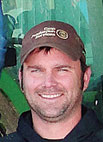
Winter forage quality can effect the health of a herd by limiting the source of feeding, especially if the mineral content of the forage is unknown. Supplementation is required when tested forage lack in essential macrominerals. Lacking in the required macrominerals can cause a metabolic disorder in cattle known as grass tetany or grass staggers. With the cold season already in full force, ranchers and farmers alike do not expect winter tetany, which can pose a problem for them if they are not aware. The low-yielding cows or negative energy cows that milk entirely off of grass are prone to tetany. The metabolic disorder also occurs from lush forages, alfalfa or annual cereal forages.
Wayne and Joyce Schulze of Adair, Okla., were Mayes County Farm Family of the Year in 2014 and they make sure their Simmental/Angus crossed bulls and Black Angus cows receive healthy forage and adequate mineral supplements. “All of our cattle are grass-fed and offered a protein supplement in the winter. This prepares them for the spring season,” said Wayne.
“I raise all of my forage and bale my own hay to feed out during the winter. I always have plenty of hay and have never had any problems with tetany,” stated Wayne.
He maintains a fertilized fescue pasture that the cattle do not graze on and is low in magnesium. “I have not fertilized sufficiently for the cattle to get tetany which mostly occurs with wheat pastures. It is a good idea to keep a mineral supplement when they are eating the lush grass,” he said.
Testing low in magnesium enforces the use of mineral supplements. Usually forages low in magnesium are also low in sodium and very high in potassium. The sodium is necessary to retain the magnesium in the body of the bovine. High levels of potassium prevent the absorption of magnesium, which oftentimes induces tetany. Cows are unable to store magnesium and require the supplementation.
“I have fairly decent hay unless it gets rained on. Some years it is hard to get fescue early enough when it is in its prime, before it seeds. If you cut it after it seeds then the quality is not that good,” Wayne added.
Although he has not had issues with tetany he said, “The problem that is most common with fescue is not tetany, it is the fungus that is in the plant. Once it goes to seed, it has a high amount of fungus that if a cow consumes, they can lose the tip of their ear or tail and their temperature will go up if they are eating a lot of it. There is little problems with fescue foot, where they get fungus between their hooves and developed into fescue foot or problems with their feet. I have one or more a year. I try to maintain a bermuda-fescue mix pasture where it is not all fescue.”
Wayne’s father combined seeds back in the ‘50s through the ‘70s and sold the seeds to a lot of people. He said, “In the ‘50s it came to the area and was very popular. A lot of people were planting it in the area. It was not grown or known about prior to the 1950s in this area.
“We have a man who delivers the supplement from the port. It is then delivered to the tank where lick wheels are located.”
Wayne reminisced about when he was a small child living on the same acreage his parents owned since 1933. His dad grew sugar cane, which was later harvested, stripped of its leaves and cooked down to molasses. Wayne would then take the canes to a guy named Sorghum Thomas who processed it into molasses, or blackstrap.
There are seven essential macrominerals (calcium, magnesium, phosphorous, potassium, sodium, chlorine and sulfur) that are required to avoid tetany. Lactating cows require a minimum of 10 percent of magnesium while growing calves require 20 percent. The maximum tolerable level for lactating cows, dry cows and growing calves is 40 percent. The minimum for all beef cattle is 10 percent magnesium.
Potassium is soluble and adding it to a supplement or in feed is rarely needed unless it is stacked hay or baled while wet from the rain. If the hay gets wet it can be leached from it because of its solubility.
The solution to knowing your forage mineral content is to have it tested at a farm extension office. The testing will identify mineral concentration levels to determine if there is an imbalance. Feeding potassium in addition to forage with a high concentration levels will only aggravate tetany.
“I was told once that if you maintain the right levels of phosphorous and sodium, then everything else (minerals) is just glitter and comes together nicely. A cow needs those two things primarily,” he ended.







